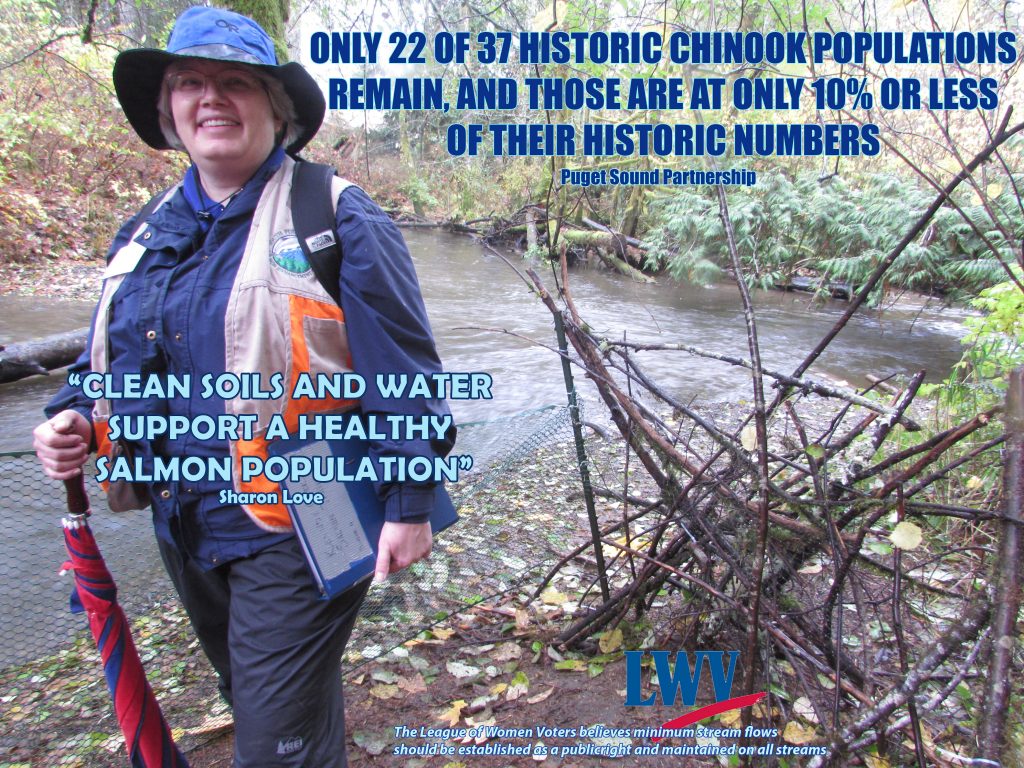Streams are rated healthy when they support many kinds of life. For a salmon stream, that means benthic invertebrates —little “bugs” that live in sediments and have evolved over thousands of years in the cold, clear-running streams of the Pacific Northwest.
The best conditions for stream bugs also tend to be very good for salmon, as these bugs represent part of the primary food supply for young salmon. Salmon later return the favor when they die, becoming food for a variety of bugs in the stream. Salmon also contribute nitrogen, recycled for the trees on the stream banks. And because salmon are the main source of food for the killer whale population, the fact that their runs are dwindling is directly connected to the feared extinction of our southern resident Orcas. As salmon continue to decrease in number, the suffering of our river ecosystems will increase.
League of Women Voters of Thurston County’s final public forum of the year, Where’s the Water: Streams, Salmon, and Orcas, May 7 at the Olympia Center. Doors open at 5:30 pm, program starts at 6:00 pm. Admission is free.
The final presentations of the League of Women Voters’ 6-part forum on water will tie together the series and describe how our streams sustain us in Thurston County. Previous forums covered our local watersheds and the extent of the County’s water, competing interests vying for a dwindling supply, ways to conserve and protect water, and the threats to water quality posed by stormwater and toxic runoff. A variety of large maps will allow you to trace all the streams and water bodies in the county.
At this final event, speakers will address the different stages in the circle of life. Ann Marie Pearce from Thurston County Planning Water Division will talk about the state of our streams and what Stream Teams are doing to improve it. A map will display streams that still have Chinook salmon runs. Gabe Madel, a fish biologist with Washington State’s Department of Fish and Wildlife will outline prospects and expectations for our salmon population. Kirsten Harmah from the Chehalis Tribe Department of Natural Resources will display a map that shows the formidable and frequent barriers to fish passage, and what the Chehalis Basin Partnership is doing to remove them and restore salmon runs. Last, Cindy Hansen, Education Coordinator of the Orca Network, will talk about the plight of our resident Orcas. They survive at the end of the food chain, as do we—a wake up call for us all.

Be First to Comment